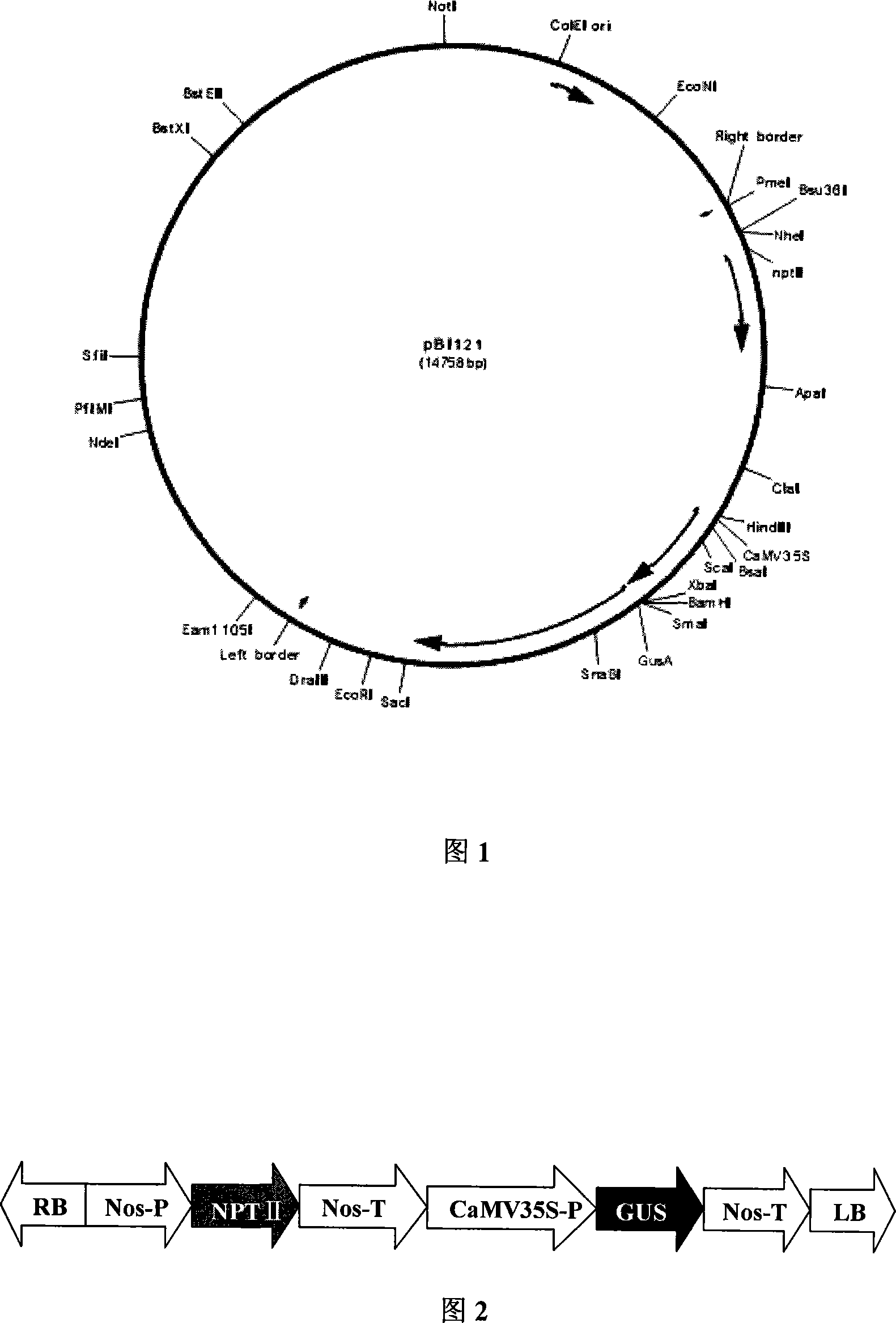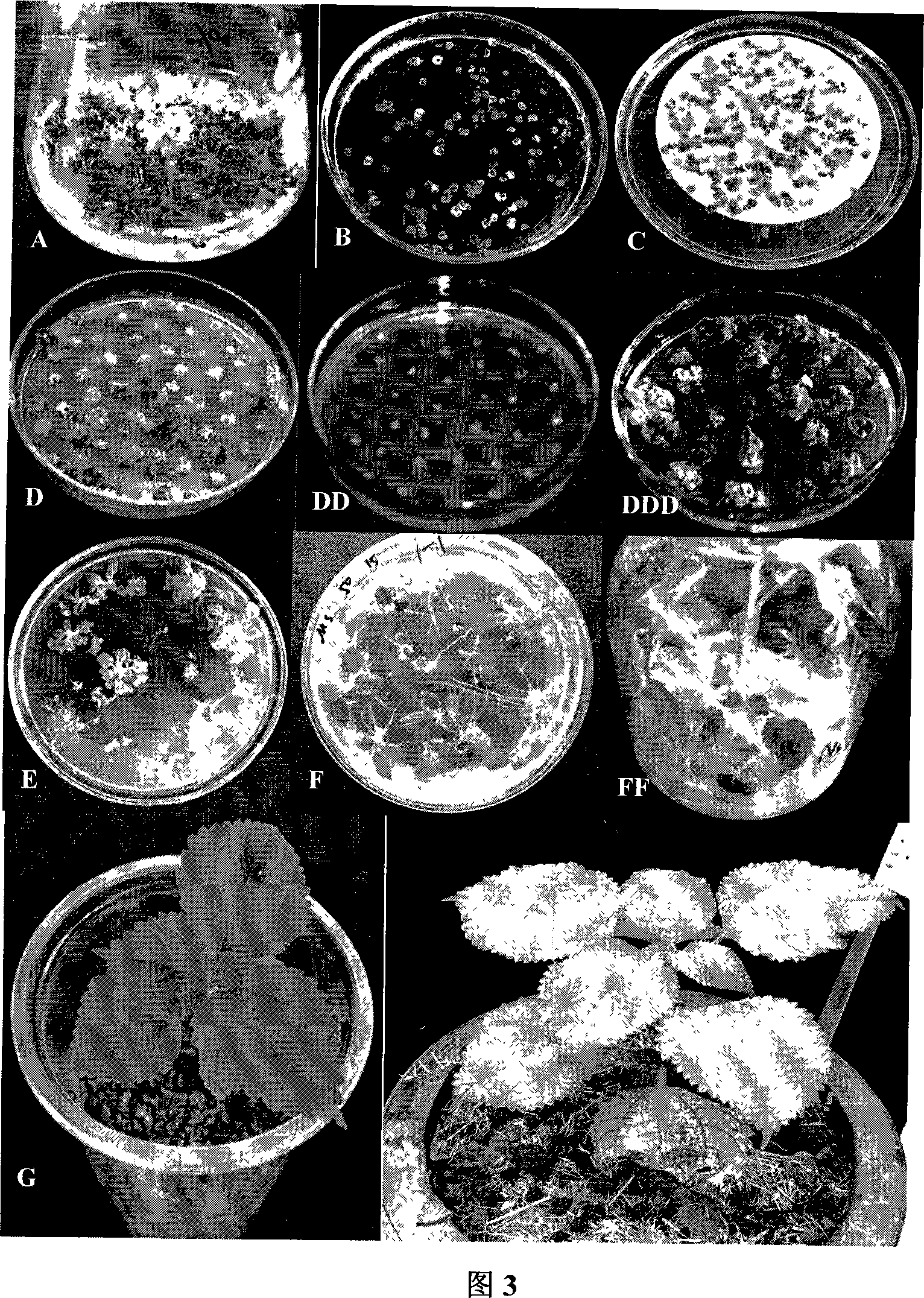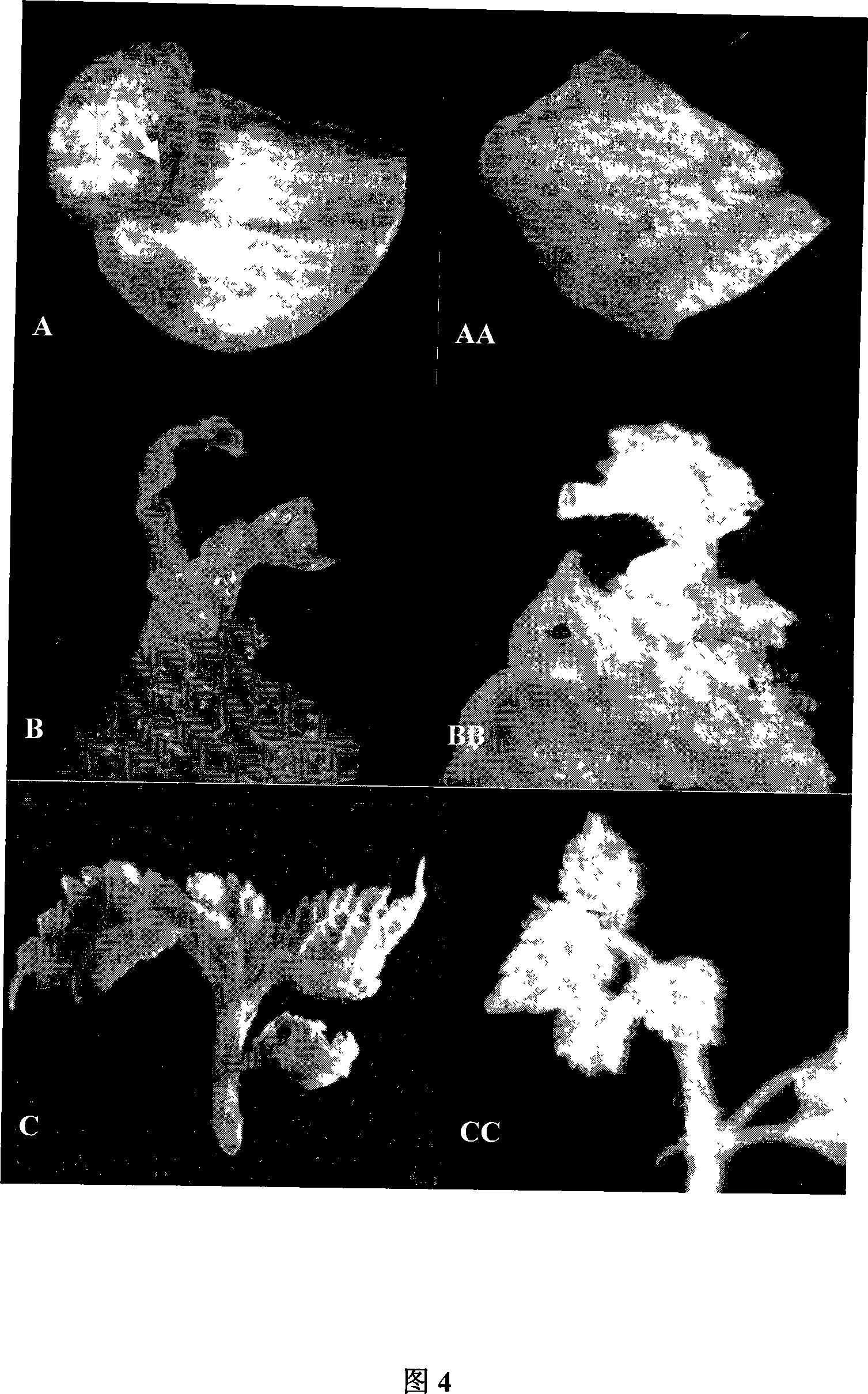Ramie highly effective genetic transformation method
A technology of genetic transformation and ramie, which is applied in the field of new plants and plant genetic engineering, and can solve problems such as genetic transformation of ramie cotyledons that have not been seen
- Summary
- Abstract
- Description
- Claims
- Application Information
AI Technical Summary
Problems solved by technology
Method used
Image
Examples
Embodiment 1
[0030] The specific method of the present invention using ramie cotyledons as explants for transformation and regeneration is: select mature ramie seed variety 5041-3 seeds (Wang et al., 2007), and the seeds are harvested from the ramie germplasm resource garden of Huazhong Agricultural University. Treat the seeds with 75% alcohol for 30 seconds, then soak them in 10% sodium hypochlorite solution for 12 minutes, rinse them with sterile water for 3 to 4 times, and inoculate them on 1 / 2 MS basic medium (the MS medium used comes from Publicly reported MS basal medium, which includes its inorganic components, organic components and iron salts. The prepared medium was sterilized at 121° C. by autoclaving for 20 minutes). Ramie seeds were cultured into sterile seedlings in vitro. The present invention selects cotyledons of seedlings with a seedling age of 4 to 6 days as the material for transformation (see the "Summary of the Invention" section of this manual for specific steps and ...
Embodiment 2
[0060] On the basis of Example 1, when the resistant bud of Example 1 grows to about 2 centimeters, it is cut off, transferred to selective rooting medium (1 / 2 MS basic medium+0~0.1mg / L naphthalene Acetic acid + 3% glucose + 0.8% agar powder + 100mg / L cephalosporin + 30mg / L kanamycin, add water to 1L, adjust the pH to 5.8) for rooting culture, and place it under the condition of 25±3°C under light Culture (3000lux). Plenty of normal roots can be produced after about 2 weeks. As can be seen from the results in Table 7, the optimal concentration of NAA in the rooting medium is 0.025mg / L.
[0061] Table 7 Effect of concentration of naphthaleneacetic acid (NAA) on rooting of ramie cotyledon-transformed regenerated seedlings
[0062] NAA concentration (mg / L)
Rooting rate
Rooting number
state of the root
0 (CK)
0.001
0.005
0.025
0.05
0.1
100%
100%
100%
100%
100%
100%
6.4±0.7e
9.7±0...
Embodiment 3
[0074] In order to verify the effectiveness of the operation process described in Example 2, the ramie cotyledons of 4 different genotypes of ramie varieties or lines have been used to carry out genetic transformation comparative studies, and the results of table 8 show that: utilize the present invention, tested 4 All genotype ramie varieties (lines) can obtain resistant plants, although the difference in the regeneration frequency of resistant buds is significant between the genotypes, the regeneration frequency is all above 10%, thus proving the broad effectiveness of the transformation method of the present invention (i.e. the present invention) The method of invention is applicable to ramie varieties or strains of different origins).
[0075] Table 8 Transformation efficiency of different genotypes of ramie by transformation method of the present invention
[0076]
[0077] Variety sources: Luzhuqing (from the local variety of Hunan Province), Nianhongxuanma (fr...
PUM
 Login to View More
Login to View More Abstract
Description
Claims
Application Information
 Login to View More
Login to View More - R&D
- Intellectual Property
- Life Sciences
- Materials
- Tech Scout
- Unparalleled Data Quality
- Higher Quality Content
- 60% Fewer Hallucinations
Browse by: Latest US Patents, China's latest patents, Technical Efficacy Thesaurus, Application Domain, Technology Topic, Popular Technical Reports.
© 2025 PatSnap. All rights reserved.Legal|Privacy policy|Modern Slavery Act Transparency Statement|Sitemap|About US| Contact US: help@patsnap.com



